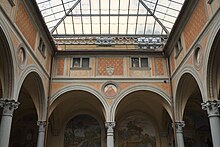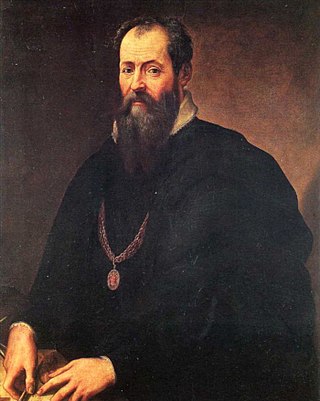
Giorgio Vasari was an Italian Renaissance Master, who worked as a painter, architect, engineer, writer, and historian, who is best known for his work The Lives of the Most Excellent Painters, Sculptors, and Architects, considered the ideological foundation of all art-historical writing, and the basis for biographies of several Renaissance artists, including Leonardo da Vinci and Michelangelo. Vasari designed the Tomb of Michelangelo in the Basilica of Santa Croce, Florence that was completed in 1578. Based on Vasari's text in print about Giotto's new manner of painting as a rinascita (rebirth), author Jules Michelet in his Histoire de France (1835) suggested adoption of Vasari's concept, using the term Renaissance to distinguish the cultural change. The term was adopted thereafter in historiography and still is in use today.
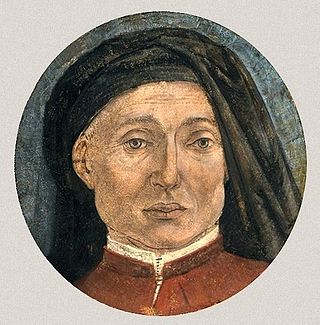
Alesso or Alessio Baldovinetti was an Italian early Renaissance painter and draftsman.

Domenico Veneziano was an Italian painter of the early Renaissance, active mostly in Perugia and Tuscany.
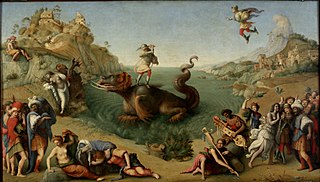
Piero di Cosimo, also known as Piero di Lorenzo, was an Italian painter of the Renaissance.

Agnolo di Cosimo, usually known as Bronzino or Agnolo Bronzino, was an Italian Mannerist painter from Florence. His sobriquet, Bronzino, may refer to his relatively dark skin or reddish hair.
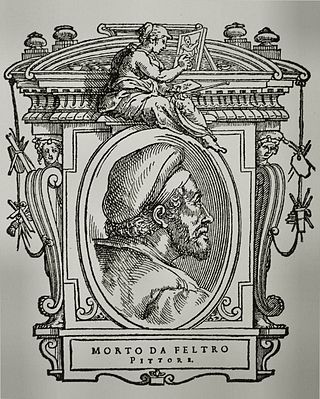
Morto da Feltre was an Italian painter of the Venetian school who worked at the close of the 15th century and beginning of the 16th.

Bernardino Poccetti, also known as Barbatelli, was an Italian Mannerist painter and printmaker of etchings.

Francesco d'Ubertino Verdi, called Bachiacca. He is also known as Francesco Ubertini, il Bacchiacca (1494–1557). He was an Italian painter of the Renaissance whose work is characteristic of the Florentine Mannerist style.
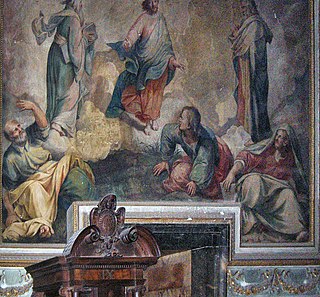
Durante Alberti was an Italian painter of the late-Renaissance period.

Francesco Bianchi was an Italian painter of the Renaissance period. He is also known as Francesco del Bianchi Ferrara and Il Frare. He was born at Ferrara. Modena is also mentioned as the place of his birth. His works were much esteemed in his time. He was a pupil of Cosimo Tura. He is said to have been an instructor of Correggio, but Bianchi would have died when the former was only 16 years old.

Antonio Barbalonga or Barbalunga, also called Antonio Alberti, was an Italian painter of the Baroque period.

Abate Andrea Belvedere was an Italian painter of the Baroque period.

Andrea del Sarto was an Italian painter from Florence, whose career flourished during the High Renaissance and early Mannerism. He was known as an outstanding fresco decorator, painter of altar-pieces, portraitist, draughtsman, and colorist. Although highly regarded during his lifetime as an artist senza errori, his renown was eclipsed after his death by that of his contemporaries Leonardo da Vinci, Michelangelo, and Raphael.
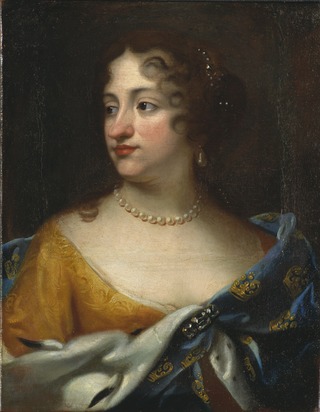
Jacques d'Agar was a French portrait painter born in Paris. He was a pupil of Jacob Ferdinand Voet. He began his career as an history painter, but he soon abandoned history for portraiture, in which branch of art he became very successful.

Andrea di Aloigi, called L'Ingegno, was an Italian Renaissance painter.
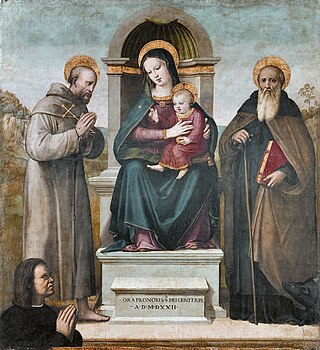
Raffaello del Brescianino or Dei Piccinelli was an Italian painter of the Renaissance period, active in Siena. Together with his brother Andrea, they were known as the Brescianini of Siena. He was the son of a dancing-master at Siena, where he flourished from 1507 to 1525. He was the pupil of a Sienese painter, named Giovan Battista Giusi, and they together painted an altar-piece, representing the 'Virgin and Child, with Saints,' which is in the Siena Academy, and in 1524 the 'Baptism of Christ,' for the baptistery of the cathedral of the same city. In 1525 the brothers went to Florence, and in the same year Andrea, and probably Raffaello also, was registered in the Painters' Guild. The brothers appear to have worked under the influence of Fra Bartolommeo. Raffaello died at Florence in 1545.
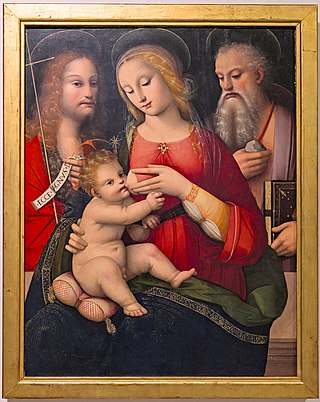
Andrea del Brescianino or Dei Piccinelli was an Italian painter of the Renaissance period, active mainly in Siena. Together with his brother Raffaello they were known as the Brescianini of Siena.

Baldassare Estense was an Italian painter.

Cosimo Gamberucci, a Florentine painter, was a scholar of Battista Naldini. He did not attain to great celebrity in the art, although some of his works in the churches at Florence, particularly his picture of St. Peter curing the lame Man, in San Pietro Maggiore, just amount to respectability. He also painted easel pictures, which are found in the collections at Florence.

The Medici Villa of Poggio a Caiano, also called Ambra, is one of the most famous Medici villas and is located in Poggio a Caiano (Prato). Today it is state owned and it houses two museums: one of the historic apartments and the Museum of Still Life.
